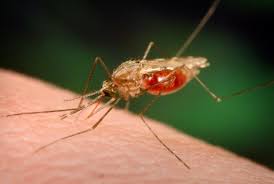HWN Jobs
- A REPUTABLE COMPANY JOBS
- MEDICAL DOCTOR JOBS AT DIALYZER SPECIALIST MEDICAL CENTRE
- BSS CONSULTING LIMITED (HSE) JOBS
- PYRAMIDS DIAGNOSTICS SERVICES (SEPTEMBER) JOBS
- DIVINE MEDICAL CENTRE LTD JOBS
HWN Blogs
- Classical heart healthy foods on HWN BLOGS
- Classical Warning Signs When The Human Liver Begins To Fail on HWN BLOGS
- Myths About Hygiene, Soaps, Germs, Sweat and Smell on HWN BLOGS
- Hernia does not heal on its own on HWN BLOGS
- Classical Essential Oils That Improves Focus Cum Memory on HWN BLOGS
news - Dengue outbreaks likely to strike some parts of Europe on HWN DENGUE UPDATE back to all News
Dengue outbreaks likely to strike some parts of Europe on HWN DENGUE UPDATE

In 2012, the World Health Organization declared dengue the most important mosquito borne viral disease globally. While dengue, like Zika, is mostly a public health problem in tropical and sub-tropical climates, increasing evidence suggests temperate areas are also increasingly at risk.
The dynamics behind the growth of areas at risk for dengue are complex," says Mikkel B. Quam, doctoral student at the Department of Public Health and Clinical Medicine, Unit of Epidemiology and Global Health and author of the dissertation. "Key drivers include warming temperatures in much of the northern hemisphere and increasing passenger interconnectivity between areas endemic for dengue, such as countries in Southeast Asia and South America, and dengue free areas, like Europe and Japan.
According to Mikkel Quam, for dengue epidemics to be imported to new areas, several key events must come together in the same place at the same time:
You need humans arriving as infected travellers to areas where there are populations of the specific kind of vector mosquito. You also need this to happen during the warm season and in a conducive environment. For parts of Southern Europe, this potentially risky time is currently the warmer summer months, but our evidence suggests both the time window and geographic areas are expected to continue expanding.
Mikkel B. Quam and his fellow DengueTools researchers have investigated the role that passenger air travel and environmental factors played in recent dengue outbreaks in temperate areas, including one on the Portuguese Island of Madeira in 2012-2013 and in Tokyo, Japan in 2014. The researchers were able to confirm the origins of the introduced virus using information from genetic sequencing. The findings indicate that imported dengue events and epidemics of dengue outside the tropics are rare but do occur.
Studying the Tokyo and Madeira outbreaks have given us a more refined understanding of how global travel networks combine with climate to essentially plant seeds, which potentially grow into dengue outbreaks, even in temperate areas," says Quam. "We have the recent introduction of Aedes-mosquito vectors into Southern Europe and increasing numbers of imported dengue cases via global travellers. Combined, this suggests that Europe and other temperate areas are increasingly at risk for local dengue transmission and seasonal emergence in the foreseeable future."
The techniques developed in this doctoral research may contribute to improved risk analysis of vector-borne diseases, such as Chikungunya and Zika, which may increasingly affect previously unexposed areas.
Courtesy: Umea University, HWN Africa.
: 2016-04-22 07:08:51 | : 1761
HWN News
- First Polish infant to survive on extreme dialysis on HWN MEDICAL MIRACLES
- Drug resistant tuberculosis end game on HWN INSIGHTS
- Too many women opting for caesarean sections (CS) to give birth on HWN SEX EDU
- The intelligent, strong and fearless Nurse that conquered Ebola on HWN ARCHIVE
- Medhi Benatia, down with injury on HWN SPORTS






